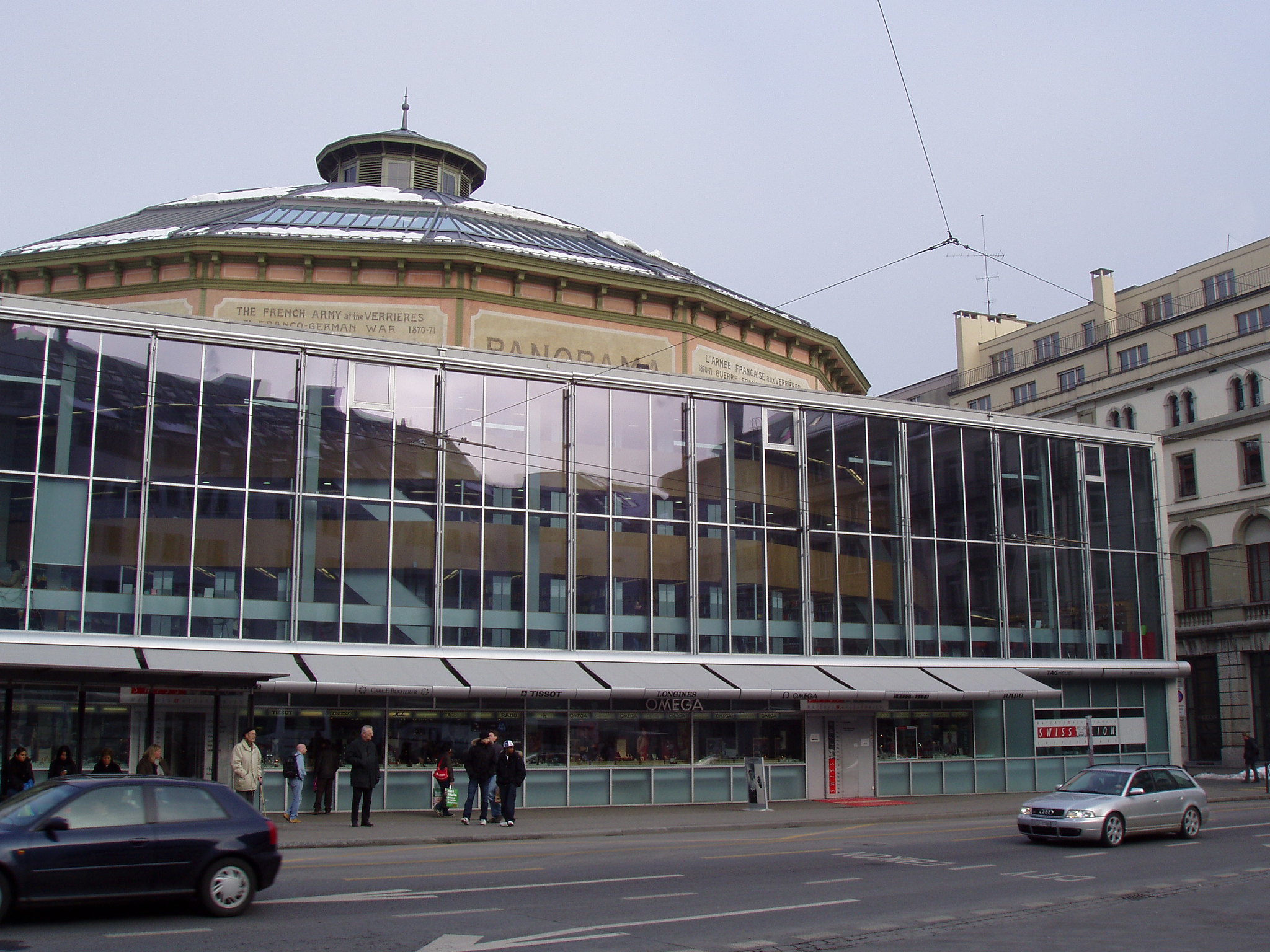The Bourbaki Panorama in Lucerne, Switzerland, stands as a testament to the power of art in preserving and conveying historical events. This massive circular painting, measuring an impressive 112 meters in circumference and 10 meters in height, offers visitors a unique and immersive experience that transports them back to a pivotal moment in European history.
Created by Swiss painter Edouard Castres in 1881, the Bourbaki Panorama depicts the retreat of the French Eastern Army, led by General Charles Denis Bourbaki, during the Franco-Prussian War of 1870-1871. The scene captures a critical moment when nearly 87,000 French soldiers sought refuge in neutral Switzerland, crossing the border at Les Verrières in the Jura Mountains.
What makes this panorama particularly fascinating is its ability to blend art and history seamlessly. Castres, who witnessed the events firsthand as a Red Cross volunteer, brings an unparalleled level of authenticity to the work. His attention to detail and emotional depth allow viewers to feel as though they are standing amidst the chaos and desperation of the retreating army.
As visitors enter the circular building housing the panorama, they are immediately struck by the sheer scale of the painting. The 360-degree view creates an illusion of being surrounded by the historical scene, with the foreground merging seamlessly into the painted canvas. This innovative approach to storytelling was groundbreaking for its time and continues to captivate audiences today.
The Bourbaki Panorama doesn’t just focus on the military aspects of the retreat. It also highlights the humanitarian efforts of the Swiss people who provided aid and shelter to the exhausted and freezing French soldiers. This aspect of the painting serves as a powerful reminder of the importance of compassion and neutrality in times of conflict.
Over the years, the Bourbaki Panorama has undergone several restorations to preserve its historical and artistic value. The most recent renovation, completed in 2000, has ensured that future generations can continue to experience this remarkable piece of art and history.
Beyond its artistic merits, the Bourbaki Panorama serves as an important educational tool. School groups and history enthusiasts alike flock to the site to gain a deeper understanding of this often-overlooked chapter in European history. The panorama’s ability to bring the past to life in such a visceral way makes it an invaluable resource for those seeking to understand the human cost of war and the complexities of international relations.
In recent years, the Bourbaki Panorama has embraced modern technology to enhance the visitor experience. Audio guides and interactive displays provide additional context and information, allowing visitors to delve deeper into the historical background and artistic techniques used in creating the panorama.
The significance of the Bourbaki Panorama extends beyond its depiction of a single historical event. It stands as a symbol of Switzerland’s long-standing tradition of neutrality and humanitarian aid. The painting serves as a reminder of the country’s role in providing refuge to those fleeing conflict, a legacy that continues to this day.
As visitors leave the Bourbaki Panorama, they often find themselves reflecting on the parallels between the events depicted and contemporary global issues. The timeless themes of war, displacement, and human compassion resonate strongly, making the panorama as relevant today as it was when it was first created.
In a world where digital media dominates our daily lives, the Bourbaki Panorama offers a refreshing and tangible connection to history. Its ability to immerse viewers in a moment frozen in time serves as a powerful reminder of the enduring impact of art and the importance of preserving our shared cultural heritage.
The Bourbaki Panorama is a significant historical and artistic landmark located in Lucerne, Switzerland. Created in 1881 by Edouard Castres, this massive circular painting depicts the retreat of the French army during the Franco-Prussian War in 1871. The panorama serves as a powerful reminder of the horrors of war and the human cost of conflict. Its immersive nature and attention to detail provide visitors with a unique perspective on a pivotal moment in European history. The Bourbaki Panorama continues to be an important cultural attraction, offering both educational value and artistic merit to those who experience it. Its preservation and ongoing relevance demonstrate the enduring impact of visual storytelling in conveying historical events and emotions across generations.

